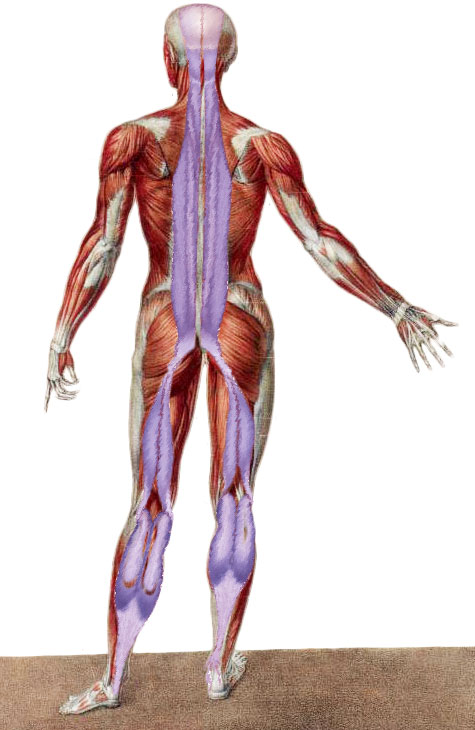Systematic review of the Anatomy Trains® myofascial chain system
The following article is an excerpt of Fascia in Motion by Elizabeth Larkam (copyright Handspring Publishing)
The practice of training fascia in Pilates has been inspired by Anatomy Trains: myofascial meridians for manual & movement therapists by Thomas W. Myers. The first edition was published in 2001. Pilates teachers seeking to augment their movement education with interdisciplinary study applied the seven categories of myofascial meridians described by Myers to the Pilates mat and apparatus repertoire and began the paradigm shift from “isolated muscle theory” to the “longitudinal anatomy”.
Many therapists and movement educators who address fascia orient themselves to concepts of myofascial chains. The assumption is made that the muscles of the human body do not function as independent units. Instead, they are regarded as part of a tensegrity-like, body-wide network, with fascial structures acting as linking components. Since fascia can transmit tension and has proprioceptive and nociceptive functions, myofascial meridians could be responsible for disorders and pain radiating to remote anatomical structures.
Myers defined seven categories of myofascial meridians connecting distal parts of the body by means of muscle and fascial tissues. The system of myofascial meridians represents a promising approach to convert tensegrity principles into practice.
The central rule for the selection of a meridian’s components is a direct linear connection between two muscles. Myofascial meridians are based on anecdotal evidence from practice and have never been verified: although widely used in exercise therapy and osteopathy, the scientific basis for the proposed connections is still a matter of debate. The systematic review article, “What is evidence-based about myofascial chains: a systematic review” by Wilke et al. (2016) aimed to provide evidence for six of the myofascial meridians based on cadaveric dissection studies.
Extensive structural continuity was clearly verified for the Superficial Back, Back Functional, and Front Functional Lines. There was moderate evidence for the Spiral and Lateral Lines and poor evidence for the Superficial Front Line. This review raised doubts about the existence of a Superficial Front Line: there is no structural connection between the rectus femoris and rectus abdominis muscles. The review suggested that most skeletal muscles of the human body are directly linked by connective tissue. 62 articles suggest strong evidence for the existence of three myofascial meridians: the Superficial Back Line (all three transitions verified), the Back Functional Line (all three transitions verified), and the Front Functional Line (both transitions verified). Moderate-to-strong evidence is available for parts of the Spiral Line (five of nine verified transitions) and the Lateral Line (two of five verified transitions). No evidence exists for the Superficial Front Line (Wilke et al., 2016).
See Also: The Evidence of Myofascial Meridians



